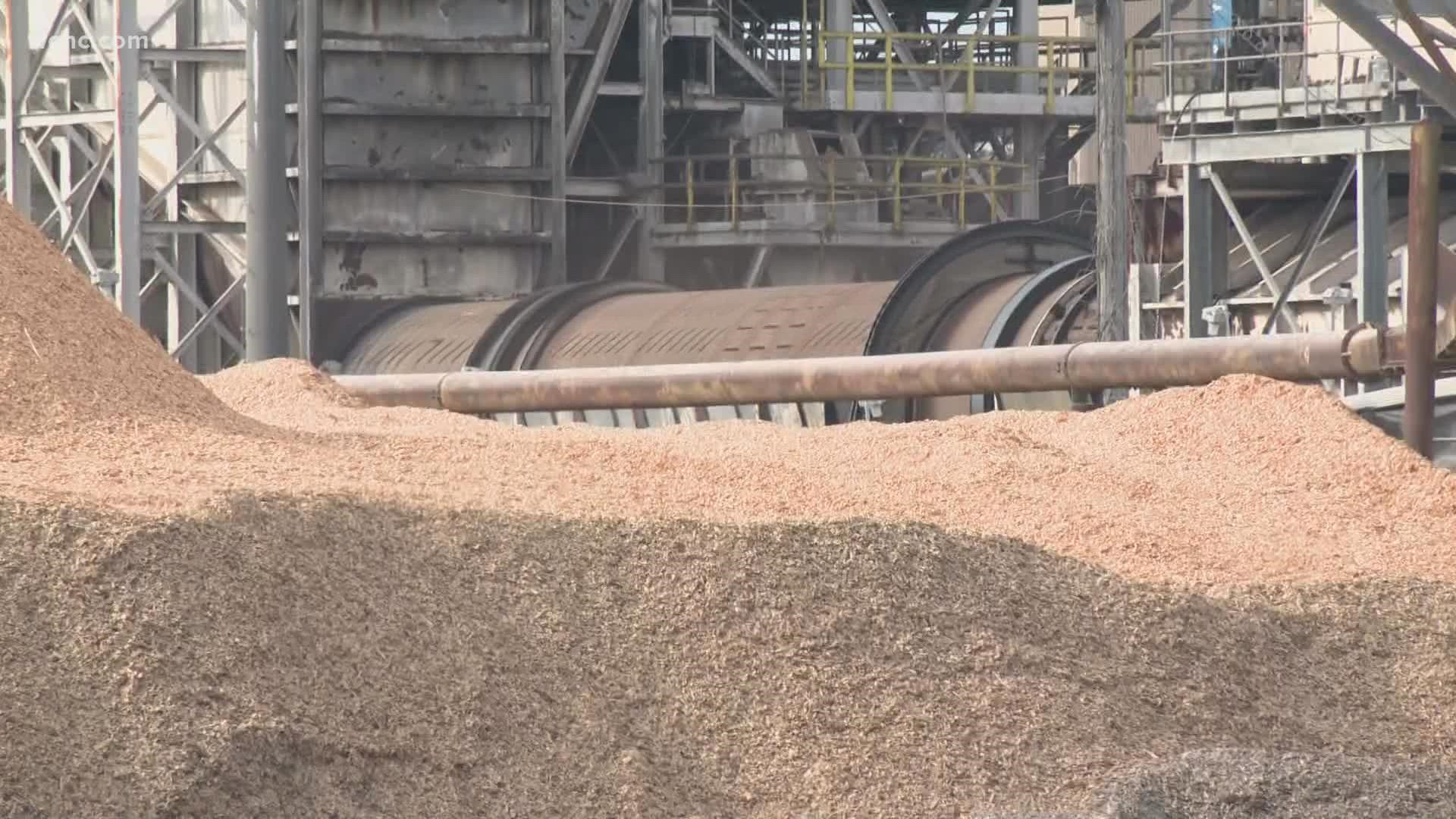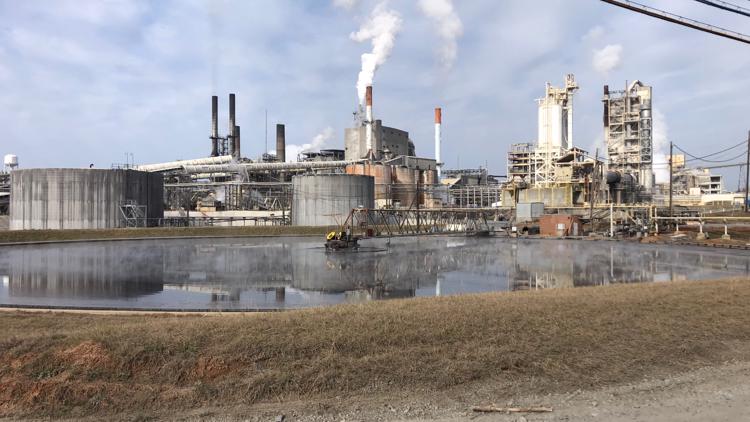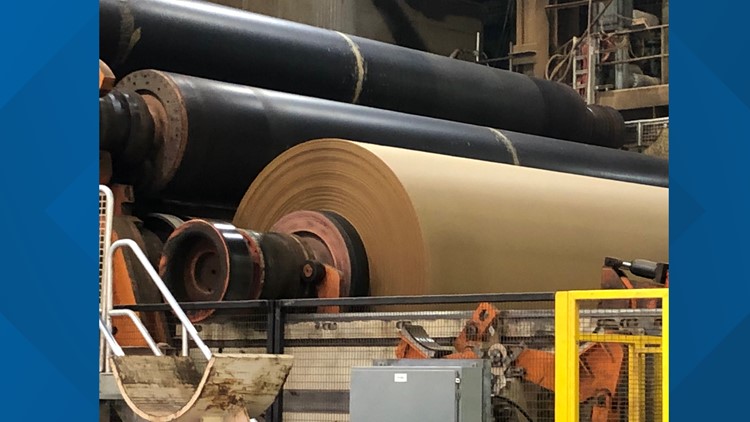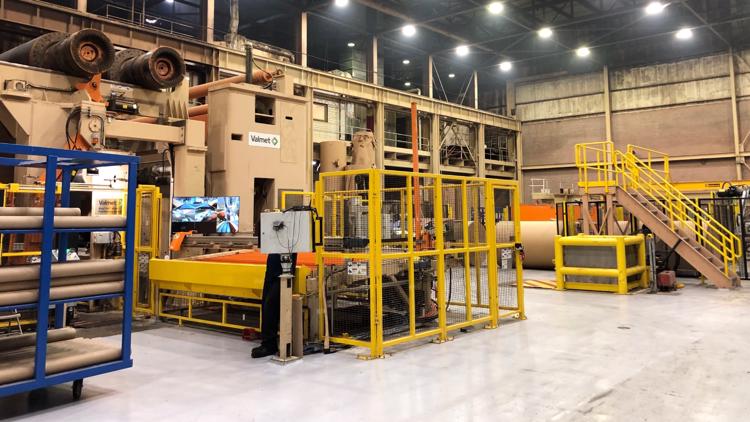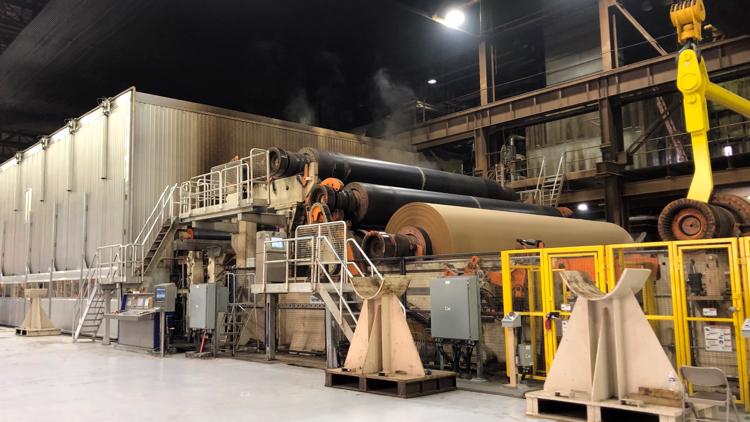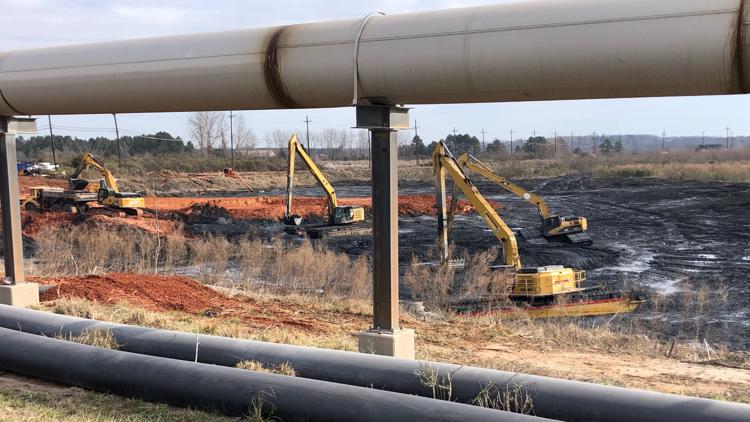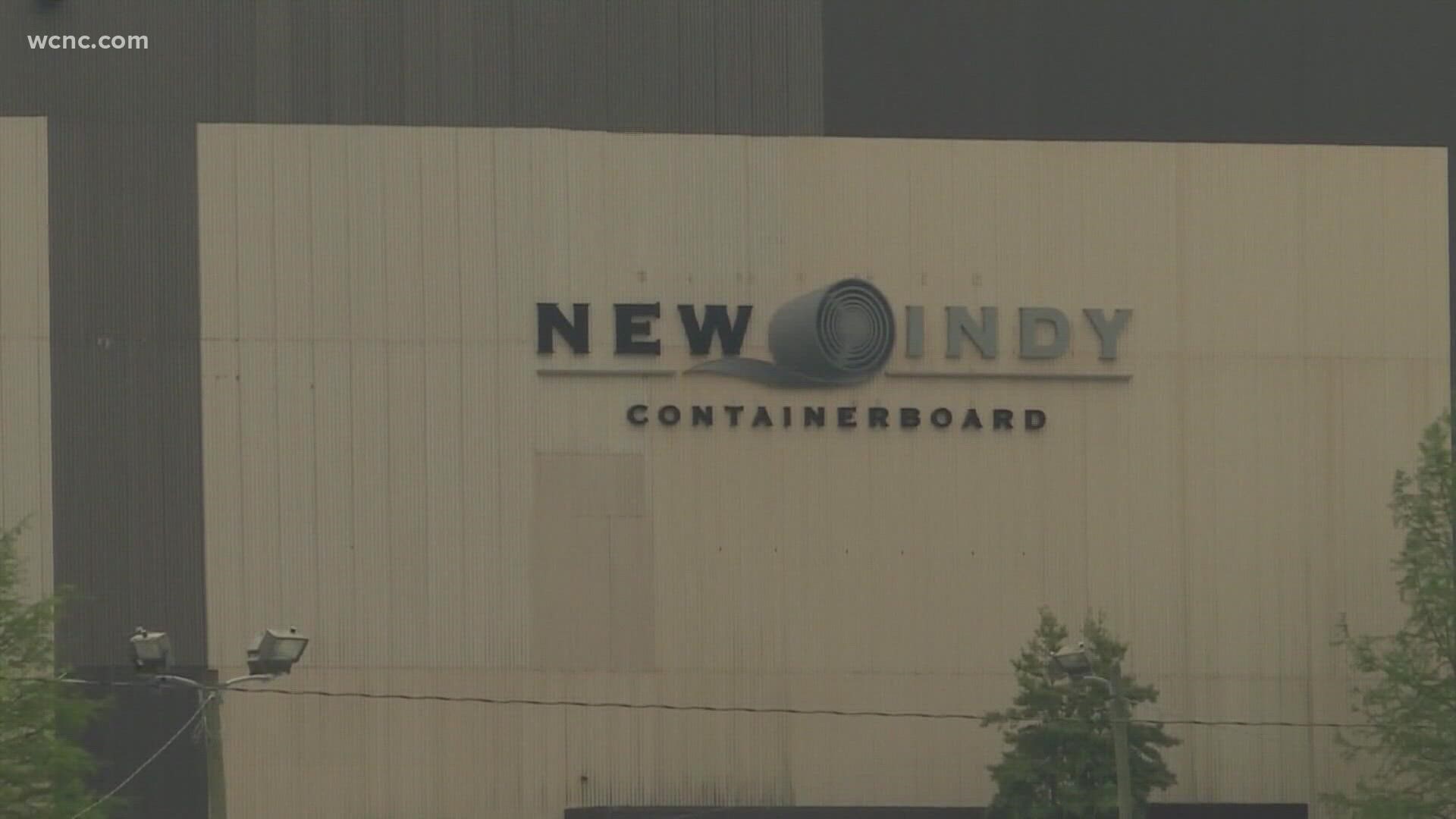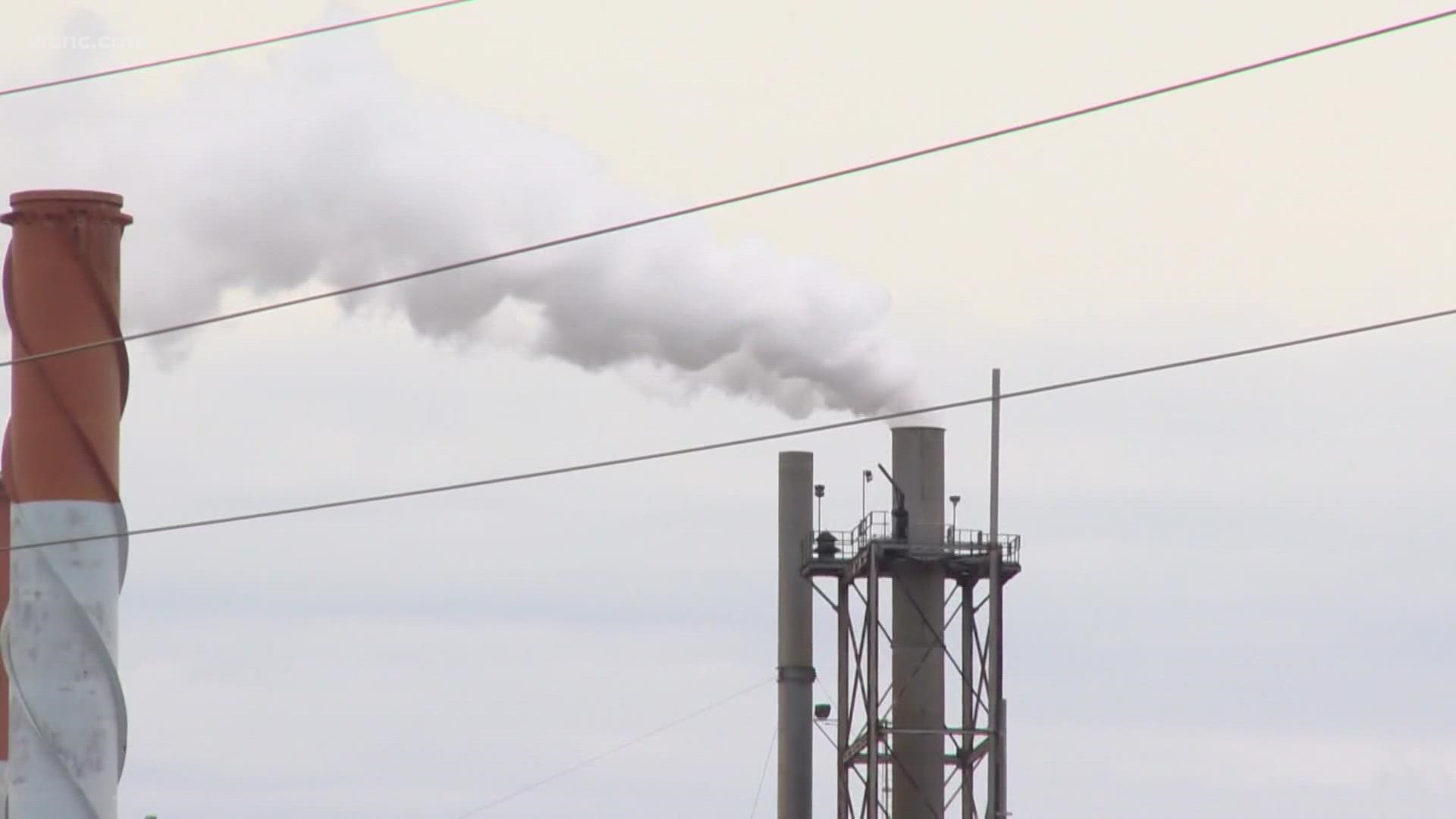CATAWBA, S.C. — As the United States Environmental Protection Agency (EPA) continues to solicit public feedback on a proposed consent decree and $1.1 million penalty against New-Indy Containerboard for high levels of foul-smelling hydrogen sulfide emissions, WCNC Charlotte was invited inside the Catawba, South Carolina mill for a behind-the-scenes look at the paper mill's operations.
WCNC Charlotte's Brandon Goldner, who has been chronicling the yearlong complaints from residents in his continued reporting, was among a small group of reporters given a restrictive, guided tour of the grounds Friday by plant manager Tony Hobson.
New-Indy which is part-owned by NFL owner Robert Kraft, has been the subject of multiple investigations and lawsuits alleging homeowners suffered nosebleeds, headaches, and coughing because of the mill's emissions.
Photos and videos from the tour shared by Goldner provide a rare look inside the facility, which is not open to the public.
Inside New-Indy facility accused of emitting odor-causing chemicals
New-Indy decided which locations the reporters could visit, and reporters were prohibited from conducting one-on-one interviews with plant workers.
After the tour, Hobson conducted a 15-minute PowerPoint presentation, where he only answered a few questions that reporters were required to submit in advance to the company's media representatives.
WCNC Charlotte agreed to these conditions in order to provide at least some glimpse inside the restricted grounds.
The tour started at the Aeration Stabilization Basin (ASB), which is part of the mill’s process to treat the wastewater it collects as workers turn wood into paper.
Federal and state environmental regulators believe the ASB is responsible for the high levels of hydrogen sulfide emissions.
A year ago, the ASB was in horrible shape, according to Hobson.
"All this was covered in material that got floated up," Hobson said. "This has been all cleared since that point in time."
Hobson said the mill brought in four additional dredges to, in laymen's terms, unclog the basin.
The mill also contracted crews with bulldozers to clear up the Equalization Basin (EQ Basin), which is another step in the mill’s treating of wastewater before it's discharged into the Catawba River.
Hobson argued their clean-up efforts have made a dent in the mill's hydrogen sulfide emissions.
"We're not going to stop where we are. Our goal is to continue to optimize this and continue to prove that we can keep it down at a low level," Hobson said. "The feedback we've gotten has been positive with what they've seen. They like what we've done and where we've come from. They've been pleased with the speed at which we’ve done it."
Many homeowners and attorneys criticized the proposed consent decree for not requiring New-Indy to purchase either a new steam stripper or additional stripper capacity.
A steam stripper helps reduce the amount of pollutants released by paper mills.
Hobson said they're researching potential changes to the stripper and then consulting with regulators.
Hobson also expressed contrition compared to last April when the company forcefully denied being responsible for reports of a foul odor from homeowners.
"We let the community down from an overall standpoint," Hobson said. "We started up. We ran into some issues at start-up and that ended up cascading into more than what we had hoped for."
Hobson did not answer several questions Goldner submitted to New-Indy's representatives.
One question asked why the mill didn't anticipate the start-up issues Hobson referenced when they first submitted their data to regulators to obtain necessary environmental permits.
As part of the proposed consent decree with the EPA, Hobson said the mill will continue to monitor how much hydrogen sulfide it's releasing, but he didn't answer one of Goldner's questions asking whether the mill will start monitoring for other toxic chemicals it could potentially be releasing.
In response, the EPA told WCNC Charlotte they submitted a request to the mill last week asking for information about other chemicals.
On Tuesday, the EPA hosted a public hearing to discuss their proposed consent decree against New-Indy.
The EPA's medical experts kicked off the meeting Tuesday with information about toxic chemicals, odors, and their impacts on health -- stressing that not one chemical, toxicant, or social factor can be the sole reason for disease or health.
Residents living near the New-Indy paper mill were quick to dismiss those comments, though.
"To try and tell us that this is no health issue is just disrespectful," one person said. "This is not a nuisance smell. We are prisoners in our own homes."
Another person said the odor is so strong, it wakes up their wife, who is a cancer survivor, during her sleep.
But not everyone at the meeting felt strongly about the smell.
"I've been working at that mill for 21 years," one man said. "This smell has not really changed at all. Every paper mill in the whole world has this smell."
As he drove to New-Indy Friday morning, Goldner said he could smell a strong odor from the facility a few miles away, but the smell wasn't as strong on facility grounds.
The EPA is still taking public comment on the proposed settlement through Feb. 9. After that, the EPA and the Department of Justice will decide whether to continue with the agreement.
The EPA previously issued an emergency order on May 13, 2021, to the paper mill in an effort to "prevent imminent and substantial endangerment to surrounding communities."
The EPA also previously issued the Clean Air Act Section 303 Emergency Order to New-Indy, requiring New-Indy to install hydrogen sulfide monitors and prohibiting the company from emitting hydrogen sulfide above health-based levels from its operations.
In a statement previously issued to WCNC Charlotte, New-Indy Catawba's mill manager said, "New-Indy worked with the EPA and the U.S. Department of Justice to resolve this matter and will comply fully with the agreement. The mill has cooperated with regulators throughout the process, implemented a long list of improvements, and is grateful for this positive and constructive outcome."

